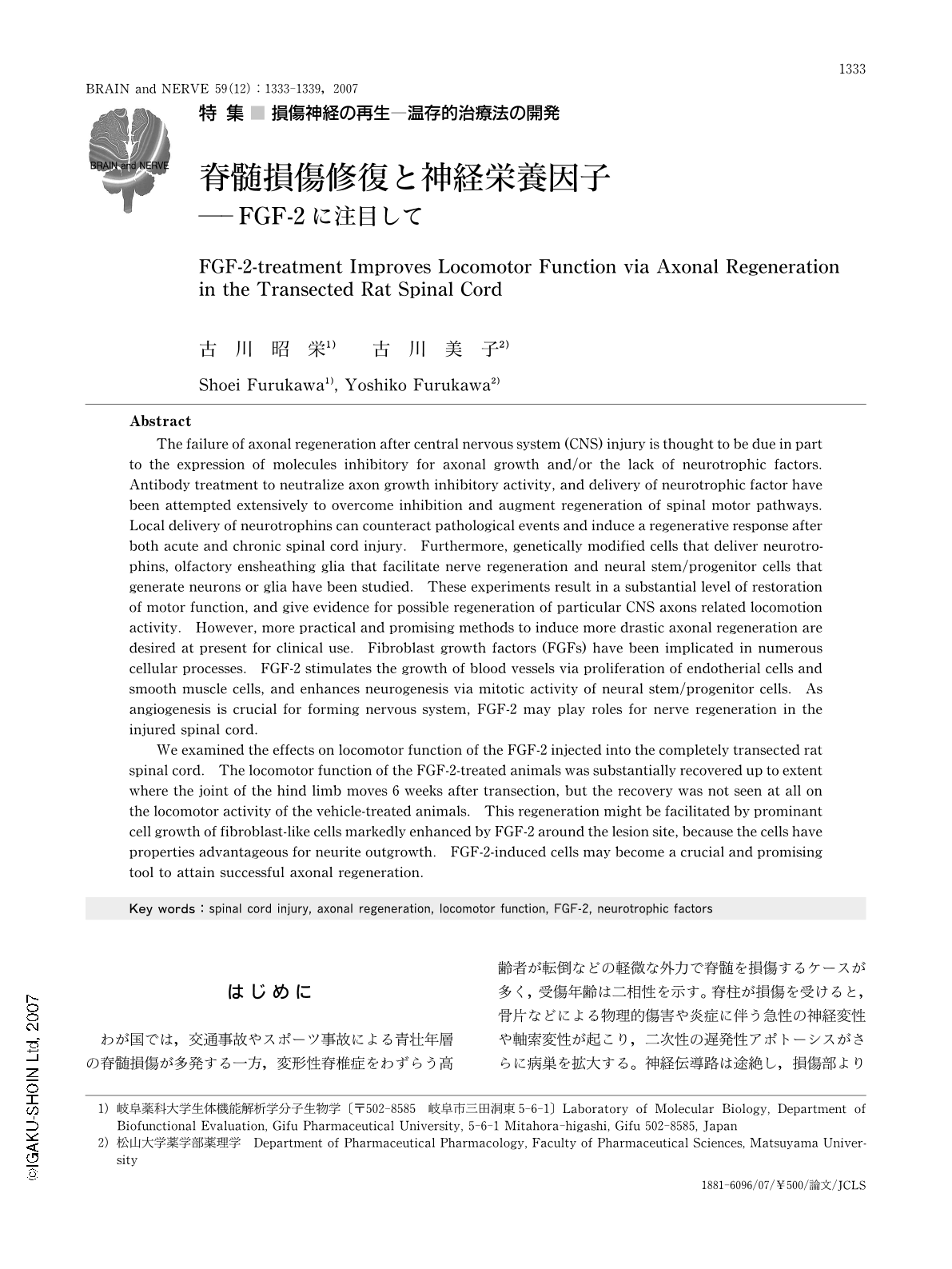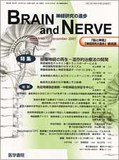Japanese
English
- 有料閲覧
- Abstract 文献概要
- 1ページ目 Look Inside
- 参考文献 Reference
はじめに
わが国では,交通事故やスポーツ事故による青壮年層の脊髄損傷が多発する一方,変形性脊椎症をわずらう高齢者が転倒などの軽微な外力で脊髄を損傷するケースが多く,受傷年齢は二相性を示す。脊柱が損傷を受けると,骨片などによる物理的傷害や炎症に伴う急性の神経変性や軸索変性が起こり,二次性の遅発性アポトーシスがさらに病巣を拡大する。神経伝導路は途絶し,損傷部より下位の身体的機能が失われ,重篤な身体障害に陥ることになる。しかしヒトも含めた哺乳動物の中枢神経系では軸索再生が起こりにくく,いったん受傷すると機能再建は極めて困難となり,患者の悲惨な状況は一生続くことになる。これは社会的に大きな損失であり,一刻も早い機能再建法の確立が望まれている。
中枢神経が損傷を受けると損傷部位に,NogoやMAG(myelin-associated glycoprotein)といった軸索伸張阻害因子が発現すること1,2),損傷部位局所で神経栄養因子が不足すること,グリア瘢痕の形成などによって神経軸索の伸張に拒絶的な環境が作られることが,再生を困難にする原因であると考えられている。これらの拒絶的環境を打破すべく,軸索伸長阻害因子の中和抗体,さまざまな神経栄養因子の投与や3-5)神経幹細胞,嗅球髄鞘グリア細胞,シュワン細胞などの移植6-8)が試みられている。いずれの方法でも,ある程度の軸索再生や運動機能の回復が観察されているが,嗅球髄鞘グリア細胞の移植法の効果が顕著で,特に注目されている。これらの結果は,中枢神経の軸索が再生可能であることを示す証拠として重要な知見ではあるが,臨床に応用するためにはもっと顕著な回復効果と高い利便性が必要である。
Abstract
The failure of axonal regeneration after central nervous system (CNS) injury is thought to be due in part to the expression of molecules inhibitory for axonal growth and/or the lack of neurotrophic factors. Antibody treatment to neutralize axon growth inhibitory activity, and delivery of neurotrophic factor have been attempted extensively to overcome inhibition and augment regeneration of spinal motor pathways. Local delivery of neurotrophins can counteract pathological events and induce a regenerative response after both acute and chronic spinal cord injury. Furthermore, genetically modified cells that deliver neurotrophins, olfactory ensheathing glia that facilitate nerve regeneration and neural stem/progenitor cells that generate neurons or glia have been studied. These experiments result in a substantial level of restoration of motor function, and give evidence for possible regeneration of particular CNS axons related locomotion activity. However, more practical and promising methods to induce more drastic axonal regeneration are desired at present for clinical use. Fibroblast growth factors (FGFs) have been implicated in numerous cellular processes. FGF-2 stimulates the growth of blood vessels via proliferation of endotherial cells and smooth muscle cells, and enhances neurogenesis via mitotic activity of neural stem/progenitor cells. As angiogenesis is crucial for forming nervous system, FGF-2 may play roles for nerve regeneration in the injured spinal cord.
We examined the effects on locomotor function of the FGF-2 injected into the completely transected rat spinal cord. The locomotor function of the FGF-2-treated animals was substantially recovered up to extent where the joint of the hind limb moves 6 weeks after transection, but the recovery was not seen at all on the locomotor activity of the vehicle-treated animals. This regeneration might be facilitated by prominant cell growth of fibroblast-like cells markedly enhanced by FGF-2 around the lesion site, because the cells have properties advantageous for neurite outgrowth. FGF-2-induced cells may become a crucial and promising tool to attain successful axonal regeneration.

Copyright © 2007, Igaku-Shoin Ltd. All rights reserved.


